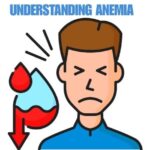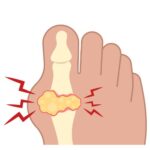Breast cancer is one of the most common cancers affecting women worldwide, although it can also occur in men. This article provides a detailed overview of breast cancer, including its types, risk factors, symptoms, diagnosis, treatment options, and preventive measures.
What is Breast Cancer?
Breast cancer occurs when breast cells begin to grow uncontrollably. This abnormal growth can lead to the formation of tumors, which may be benign (non-cancerous) or malignant (cancerous). If malignant, the cancer can invade nearby tissues and potentially spread to other parts of the body (metastasize).
Types of Breast Cancer
Breast cancer is not a single disease but rather a group of related cancers that can vary significantly in terms of their characteristics and behavior. Understanding the different types of breast cancer is essential for diagnosis, treatment, and prognosis. Here’s a detailed overview of the main types of breast cancer:
1. Invasive Ductal Carcinoma (IDC)
- Description: IDC begins in the milk ducts of the breast and then invades surrounding breast tissue.
- Prevalence: It is the most common type of breast cancer, accounting for about 80% of all cases.
- Subtypes: IDC can have various subtypes based on histological features, including:
- Tubular Carcinoma: A less aggressive form that usually has a better prognosis.
- Mucinous Carcinoma: Characterized by the production of mucus; tends to grow more slowly.
2. Ductal Carcinoma In Situ (DCIS)
- Description: DCIS is a non-invasive condition where abnormal cells are found in the lining of the milk ducts but have not spread to surrounding breast tissue.
- Significance: Considered a precursor to invasive breast cancer, it is highly treatable and usually detected through routine mammograms.
- Treatment Options: Often treated with surgery (lumpectomy or mastectomy) and possibly radiation therapy.
3. Invasive Lobular Carcinoma (ILC)
- Description: ILC originates in the lobules (milk-producing glands) and is known for its unique growth pattern, often forming in a single-file pattern that can make it harder to detect on mammograms.
- Prevalence: Accounts for about 10-15% of all breast cancer cases.
- Characteristics: It can be more challenging to diagnose early and may present as a thickening in the breast rather than a distinct lump.
4. Triple-Negative Breast Cancer (TNBC)
- Description: TNBC is characterized by the absence of estrogen receptors, progesterone receptors, and excess HER2 protein. This makes it more aggressive and less responsive to certain hormone therapies.
- Prevalence: Accounts for about 10-20% of breast cancers.
- Treatment Challenges: Often treated with chemotherapy, as hormone therapies and targeted therapies are ineffective.
5. HER2-Positive Breast Cancer
- Description: HER2-positive cancers have an overexpression of the HER2 gene, which promotes the growth of cancer cells.
- Prevalence: About 15-20% of breast cancers are HER2-positive.
- Treatment Options: Often treated with targeted therapies like trastuzumab (Herceptin) that specifically target the HER2 protein, in addition to chemotherapy.
6. Inflammatory Breast Cancer (IBC)
- Description: A rare and aggressive form of breast cancer that blocks lymph vessels in the skin, causing swelling, redness, and a warm sensation in the breast.
- Symptoms: Often presents with rapid changes in the breast’s appearance, including dimpling and an orange-peel texture (peau d’orange).
- Treatment: Typically requires a combination of chemotherapy, surgery, and radiation, given its aggressive nature.
7. Paget’s Disease of the Nipple
- Description: A rare form of breast cancer that begins in the ducts of the nipple and spreads to the skin and area of the nipple.
- Symptoms: May present with redness, flaking, or crusting of the nipple skin, along with possible discharge.
- Diagnosis: Often associated with underlying ductal carcinoma and treated with surgery, sometimes alongside chemotherapy or radiation.
8. Phyllodes Tumors (Cystosarcoma Phyllodes)
- Description: These are rare tumors that can be benign or malignant and originate in the stromal (connective) tissue of the breast.
- Characteristics: They can grow quickly and may resemble fibroadenomas (benign breast lumps) but are distinct in their potential for rapid growth and recurrence.
- Treatment: Typically requires surgical removal, and they do not usually require chemotherapy or radiation.
Understanding the different types of breast cancer is crucial for effective treatment and management. Each type has its own unique characteristics, risk factors, and treatment approaches. Early detection and accurate diagnosis are vital, as they significantly influence treatment options and outcomes. Regular screenings and awareness of breast health can help identify potential issues early, leading to better prognoses. If diagnosed with breast cancer, working closely with a healthcare team to determine the most appropriate treatment plan based on the specific type of cancer is essential.
Risk Factors of Breast Cancer
Several factors can increase the risk of developing breast cancer:
Non-Modifiable Risk Factors
- Gender: Women are at a much higher risk than men.
- Age: Risk increases with age, particularly after 55.
- Family History: Having a close relative with breast cancer may elevate risk.
- Genetic Mutations: Certain gene mutations (e.g., BRCA1 and BRCA2) significantly increase the risk.
Modifiable Risk Factors
- Weight: Obesity, particularly after menopause, can increase risk.
- Physical Inactivity: Lack of exercise can contribute to higher risk.
- Alcohol Consumption: Higher intake of alcohol is linked to increased risk.
- Hormone Replacement Therapy: Use of combined hormone therapy for more than three years may elevate risk.
- Smoking: Tobacco use has been linked to various cancers, including breast cancer.
Symptoms of Breast Cancer
Breast cancer may present with various symptoms, some of which include:
- Lump or Mass: A new lump or mass in the breast or underarm area is often the first noticeable symptom.
- Changes in Size or Shape: Alterations in the size or contour of the breast.
- Skin Changes: Dimpling, puckering, or redness of the breast skin.
- Nipple Changes: Inversion, discharge (clear, bloody, or other), or a rash around the nipple.
- Swelling: Any swelling in the breast or lymph nodes in the armpit.
Diagnosis of Breast Cancer
Early detection is critical in improving treatment outcomes. The following methods are commonly used for diagnosis:
Screening Tests
- Mammograms: X-ray images of the breast used for routine screening. Women are generally advised to start annual or biennial screenings at age 40 or earlier if at high risk.
- Breast Ultrasound: Used to examine lumps detected in a mammogram or clinical breast exam.
- MRI: Magnetic resonance imaging may be used for high-risk women or to gather more information about abnormalities.
Diagnostic Procedures
- Biopsy: A definitive diagnosis is made by removing a sample of breast tissue for examination. Types include:
- Fine-Needle Aspiration: A thin needle is used to extract tissue or fluid.
- Core Needle Biopsy: A larger needle is used to remove a small cylinder of tissue.
- Surgical Biopsy: Involves removing a portion (incisional) or the entire lump (excisional).
Additional Tests
- Hormone Receptor Tests: Determine if the cancer cells have hormone receptors (estrogen and progesterone), which can influence treatment decisions.
- HER2 Testing: Checks for the presence of the HER2 gene or protein, guiding treatment options.
Treatment Options of Breast cancer
The treatment plan for breast cancer depends on the type, stage, and characteristics of the cancer, as well as the patient’s overall health and preferences.
Surgery
- Lumpectomy: Removal of the tumor and a small margin of surrounding tissue, preserving most of the breast.
- Mastectomy: Complete removal of one or both breasts, which may be necessary for more advanced cancer or as a preventive measure.
Radiation Therapy
- Function: Uses high-energy waves to kill cancer cells, often used after surgery to eliminate remaining cancerous cells.
Chemotherapy
- Purpose: Utilizes drugs to kill cancer cells, typically used for invasive cancers or when there’s a risk of spread.
Hormone Therapy
- Function: For hormone receptor-positive cancers, medications (like tamoxifen or aromatase inhibitors) block hormones from fueling cancer growth.
Targeted Therapy
- Overview: Focuses on specific characteristics of cancer cells, such as HER2 positivity. Examples include trastuzumab (Herceptin).
Immunotherapy
- Emerging Treatment: Uses the body’s immune system to fight cancer. Some trials are exploring its effectiveness in breast cancer treatment.
Living with Breast Cancer
Emotional and Psychological Support
A breast cancer diagnosis can be overwhelming. Support networks, counseling, and support groups can be beneficial for coping with emotional challenges.
Lifestyle Modifications
- Healthy Diet: Maintaining a balanced diet can aid recovery and overall health.
- Regular Exercise: Physical activity can help alleviate treatment side effects and improve quality of life.
- Follow-Up Care: Regular check-ups are vital for monitoring health and managing any long-term effects of treatment.
Breast cancer Prevention
While not all breast cancer cases can be prevented, certain measures can reduce risk:
- Regular Screenings: Early detection through mammograms and self-exams can lead to better outcomes.
- Healthy Lifestyle: Maintaining a balanced diet, exercising regularly, limiting alcohol intake, and avoiding tobacco use can reduce risk.
- Genetic Testing: For those with a strong family history, genetic testing can inform decisions about preventive measures, including prophylactic surgery.

Breast cancer is a complex disease that affects many individuals and families. Understanding the risk factors, symptoms, diagnostic procedures, and treatment options is essential for effective management and prevention. Regular screenings, a healthy lifestyle, and staying informed about advances in research and treatment can empower individuals to take charge of their breast health. If you or someone you know is facing breast cancer, it is crucial to seek support and guidance from healthcare professionals.







